Vibration Meter PCE-VM 20
ราคาพิเศษ ฿81,000.00 excl VAT
฿86,670.00 incl VAT
PCE-VM 20
Availability : กรุณาติดต่อสอบถาม
Vibration meter for vibration measurement on the machines /�
direct evaluation in compliance with DIN ISO 10816 / various measurement modes / real-time FFT analysis / route option for fast acquisition of the measuring points
Rotating components in the machines generally cause machine vibrations which can be transmitted to the entire machine via mechanically coupled components. In this way, a vibration mixture with different frequency components is created. These machine vibrations may have various effects which may be desired (e.g., in conveyors or vibrating screens), though are often unwanted and lead to poor manufacturing qualities and increased wear of the machine. An increased wear because of the machine vibrations leads to the reduced running times, higher failure rates, and higher maintenance costs, so overall, to the avoidable costs. As negative as the effects of the machine vibrations on the machine itself may be, so much these mechanical vibrations are advantageous during the analysis of the machine damage and its causes. Often the same recurring errors such as imbalances, alignment errors or bearing damage, like a kind of fingerprint, can be determined in the frequency spectrum of a machine vibration and help, after proper evaluation, to find the sources of the errors and eliminate the causes.
How to Measure Machine Vibrations
Stationary systems for permanent machine monitoring or mobile vibration measuring devices for the regular recording of the measured values are suitable for the measurement of machine vibrations. Mobile vibration meters, such as the PCE -VM 20 from PCE Instruments, due to various specifications are excellently suitable for measuring the machine vibrations. The vibration meter can detect the vibration accelerations (up to 20 g), vibration velocities (up to 200 mm / s) and vibration paths (up to 2000μm) in a frequency range from 1 … 10,000Hz. At the same time, the frequency measurement can be carried out by means of FFT analysis to filter out the dominant vibration frequencies in the vibration mixture.
In the assessment of machine vibrations, limit values can be, on the one hand, determined and defined on the basis of own experiences, but, on the other hand, a common approach may be applied, when the limits for machine vibrations in compliance with ISO 10816 are taken into consideration. In ISO 10816, the machines are divided into performance classes and in accordance with that, the limit values are defined in colors. The vibration measuring device for machine vibrations represents the limit values of ISO 10816. This means that if the vibrations are too high and the limit values are exceeded, the display value changes corresponding to the Standard. This makes it immediately evident whether the general machine condition is within the ISO 10816 Standard or whether there is a need for taking measures, since the vibration level is in the orange or even red range.
Since the machine damage does not occur suddenly and there are always indications of certain problems with the machine over longer periods of time, it is advisable to regularly check the machine vibrations at fixed time intervals. This allows for timely detection of the changes in the vibration behavior of the machine and correction of the problems. Since often several measuring points are tested on one machine, it frequently leads to the fact that a big number of measuring points in several systems and pieces of equipment should be checked regularly. In order to keep the track of these measuring routes, the measuring device also has a measuring root function, due to which the measured values can automatically be assigned to a measuring point. As a result, the further comparability and the detection of trend developments is much easier.
Due to these functions and properties, the machine vibration measuring device is suitable for compliance with limit values (ISO 10816), for troubleshooting and localization of the error sources and thus for correcting the defective machine vibrations.
– real-time FFT analysis
– robust housing
– many vibration parameters
– direct evaluation of machine vibrations in compliance with DIN ISO 10816
– integrated LiPo battery
| Vibration acceleration | 0 … 200 m/s², RMS and Peak-Peak |
| Vibration velocity | 0 … 200 mm/s, RMS |
| Vibration displacement | 0 … 2000 μm, Peak-Peak |
| Accuracy vibration | ± 5% |
| Operating modes | Vibration, temperature, speed |
| Representable measured variables | Frequency |
| Vibration acceleration | |
| Vibration velocity | |
| Vibration | |
| FFT spectrum | |
| Units | Metric |
| Hz, mm/s², mm/s, μm, RPM, Hz | |
| Interface | USB 2.0 |
| Storage | 4GB micro SD card |
| Battery life | Up to 8 h continuous operation |
| Battery type | Lithium polymer |
| Display | 128 x 160 pixel color LCD |
| Environmental conditions | -10 … 55°C / 14 … 131°F |
| ≤ 80% RH not condensing | |
| Dimensions | 132 x 70 x 33 mm / 5.2 x 2.8 x 1.3 in (L x W x D) |
| Weight | About 150 g / < 1 lb |
| Handset: must not be exposed to strong vibrations, magnetic fields, corrosive media or dust | |
| Technical data for the vibration sensor | |
| Sensitivity | 100 mV / g |
| Frequency response (± 3 dB) | 0.5 … 15,000 Hz |
| Frequency response (± 10%) | 2.0 … 10,000 Hz |
| Dynamic range | ± 50 g, peak |
| Power supply (IEPE) | 18 … 30V DC |
| Constant current source | 2 … 10-mA |
| Spectral noise at 10 Hz | 14 μg / √Hz |
| Spectral noise at 100 Hz | 2.3 μg / √Hz |
| Spectral noise at 1000 Hz | 2 μg / √Hz |
| Output impedance | < 100 Ω |
| Bias voltage | 10 … 14V DC |
| Housing insulation | > 100 MΩ |
| Environmental conditions | -50 … 121 °C / -58 … 249.8 °F |
| Maximum impact protection | 5000 g, peak |
| Resonant frequency | 23,000 Hz |
| Housing material | 316L stainless steel |
| Connection | 2 Pin MIL-C-5015 |
| Protection | IP68 |
| Weight | 90 g / < 1 lb |
เฉพาะลูกค้าที่เข้าสู่ระบบ และเคยซื้อสินค้าชิ้นนี้แล้วเท่านั้น ที่เขียนบทวิจารณ์ได้
สินค้าที่เกี่ยวข้อง
เครื่องวัดความสั่นสะเทือน / Vibration Meter
Vibration Analyzer PCE-VT 1300S-ICA incl. ISO Calibration Certificate
PCE-VT 1300S-ICA
เครื่องวัดความสั่นสะเทือน / Vibration Meter
PCE-VT 1300
เครื่องวัดความสั่นสะเทือน / Vibration Meter
฿41,205.70 incl VAT
สามารถเลือกหน่วย imperial หรือ metric ได้ พร้อมหน่วยความจำ 100 จุด
เครื่องวัดความสั่นสะเทือน / Vibration Meter
PCE-VD 3
เครื่องวัดความสั่นสะเทือน / Vibration Meter
EN-200-KIT Vibration Meter & Stethoscope เครื่องวัดความสั่นสะเทือน
฿31,907.40 incl VAT
EN-200 เป็นเครื่องที่ใช้วัดความสั่นสะเทือนชนิดทนทาน มีหูฟังเพื่อฟังเสียงของลูกปืน สินค้ารับประกัน 5 ปี!!!
เครื่องวัดความสั่นสะเทือน / Vibration Meter
฿24,414.19 incl VAT
เครื่องวัดความสั่นสะเทือนความถี่กว้างใช้วัดระยะทาง ความเร็ว และความเร่ง
เครื่องวัดความสั่นสะเทือน / Vibration Meter
฿9,041.50 incl VAT
บันทึกค่าความสั่นสะเทือนและเวลา สามารถจับ Shock และ Peaks ได้
เครื่องวัดความสั่นสะเทือน / Vibration Meter
PCE-HAV 100



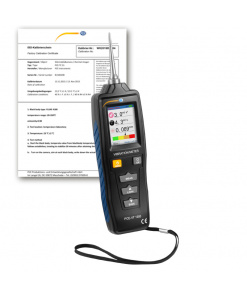
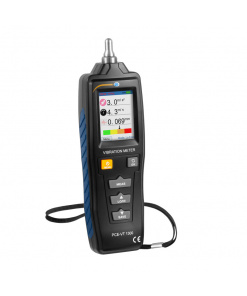
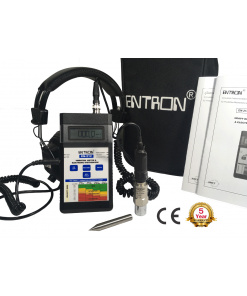

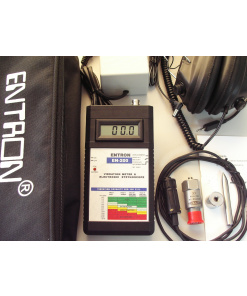


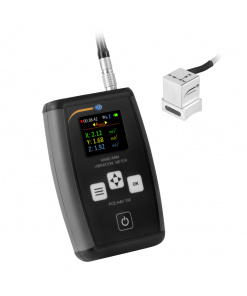
รีวิว
ยังไม่มีบทวิจารณ์